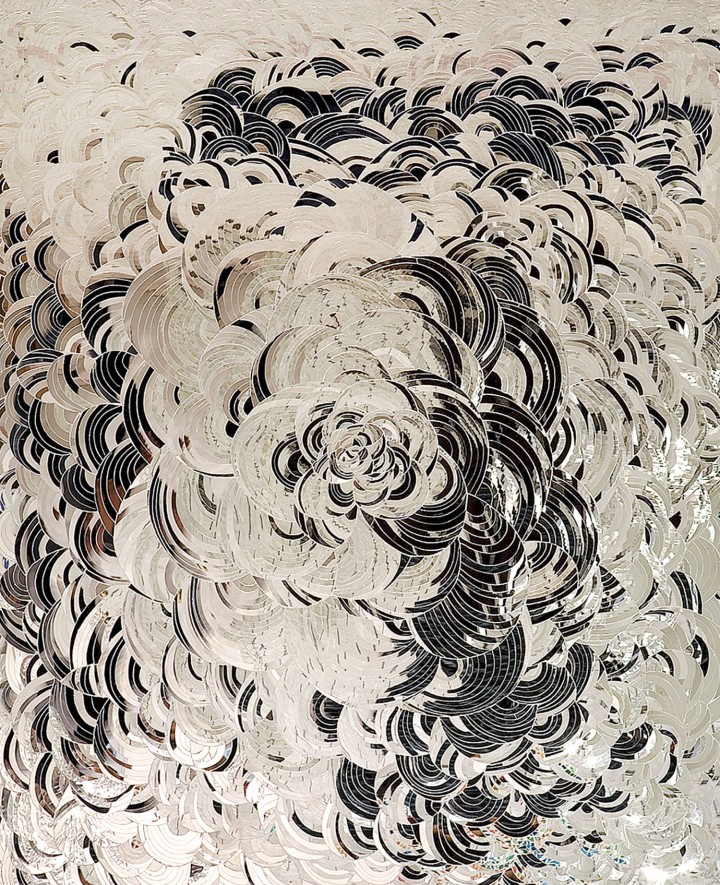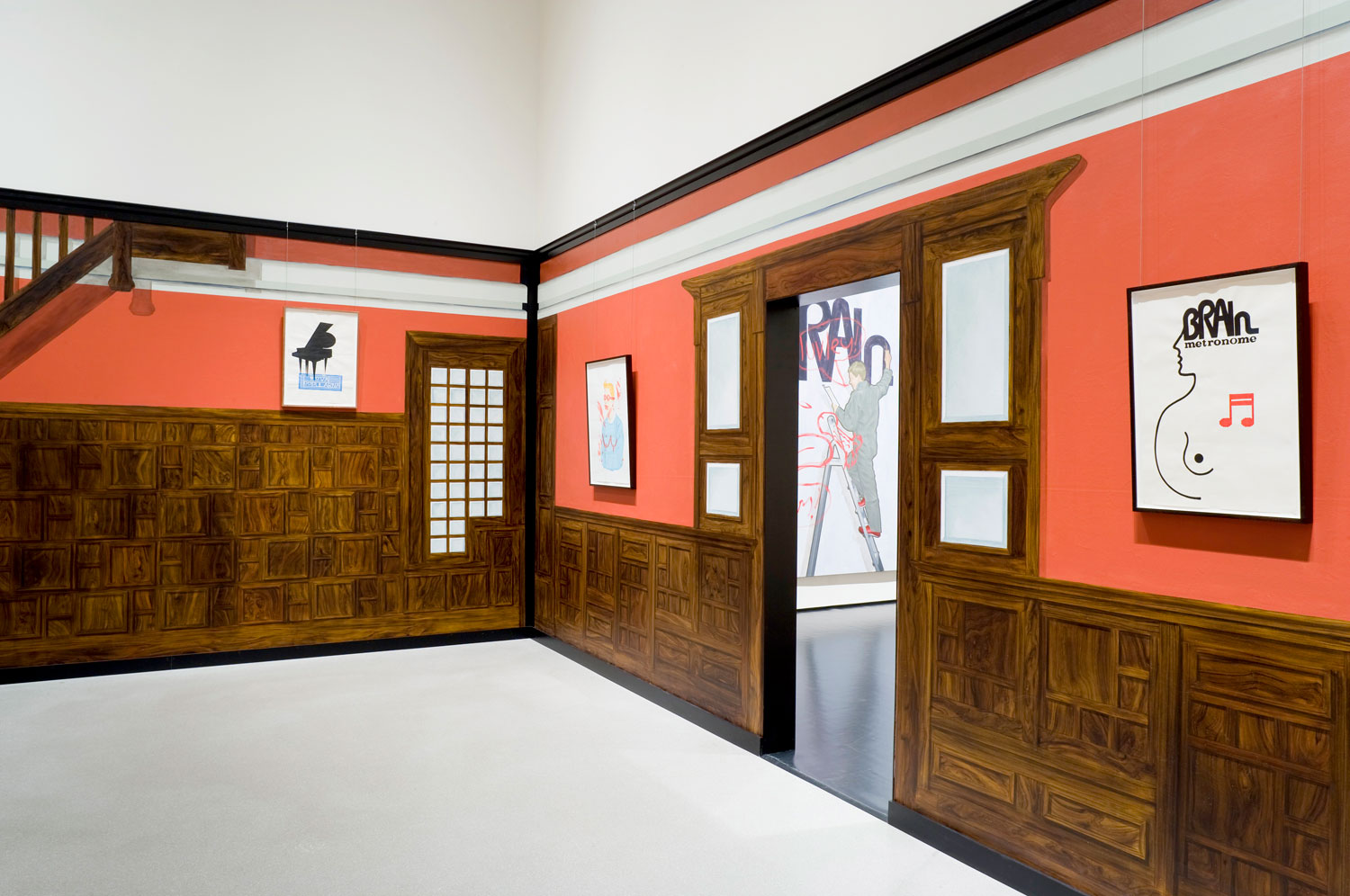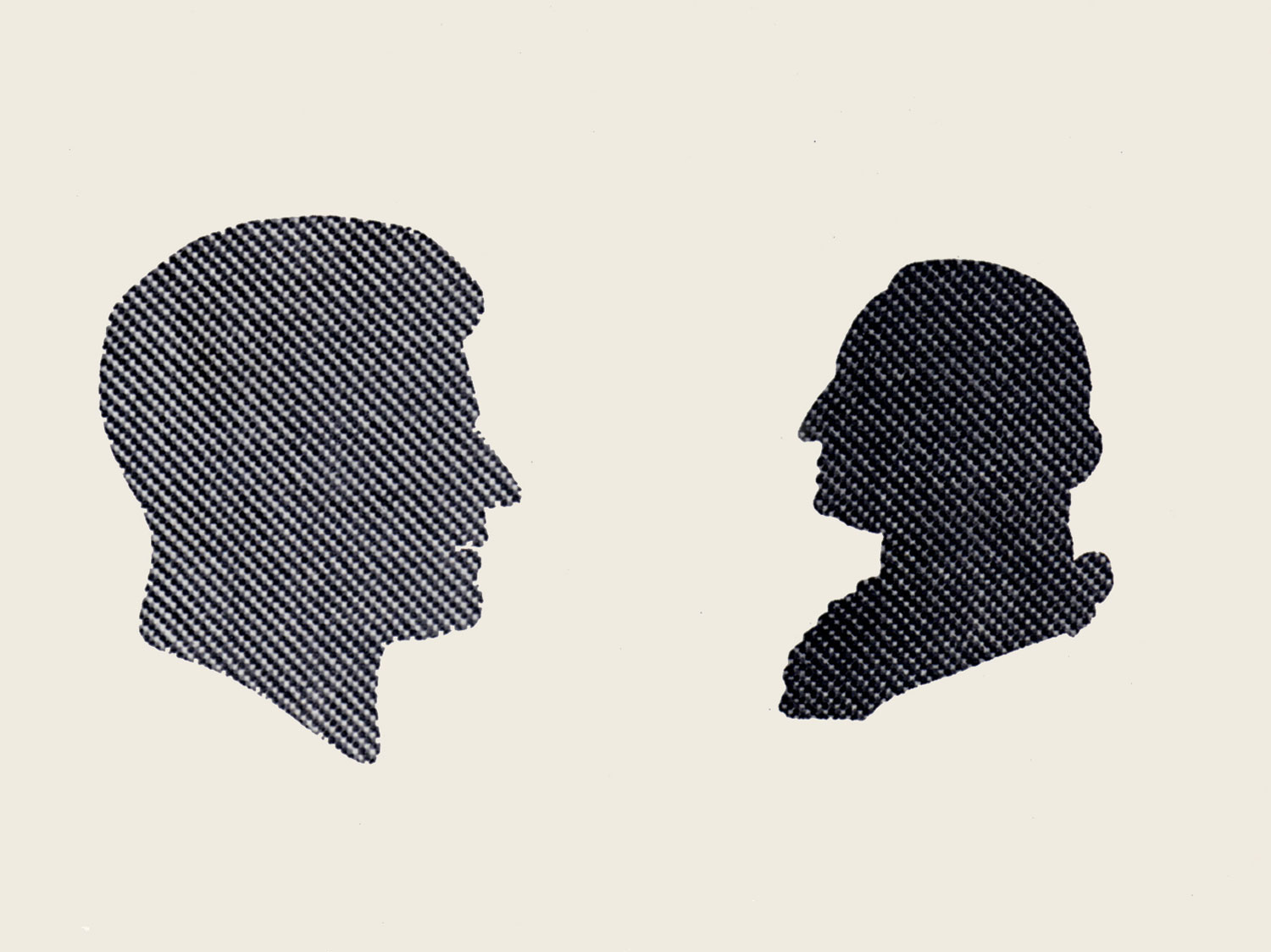
Maurizio Bortolotti: I’d like to start from your position as an artist and woman in Iran. You have been through many difficult times — living through the complex political situation after WWII. The history of your country is one of being suspended between the push for modernity and a deeply rooted connection with tradition and religion. Tell me about some of the difficulties you faced in the early days.
Monir Shahroudy Farmanfarmaian: I began studying at the Faculty of Fine Art, Tehran (1944), before traveling to the United States on a steamer. In 1945, during the war, I was studying at Cornell University in New York. There were no difficulties for me as a student. When I finished I started working freelance in New York until 1946. I came back in 1958 to Tehran. So I was not submerged in politics and I wasn’t an artist with difficulties. I was studying, which was easy.
MB: Did you go to America alone?
MSF: I was with my fiancé and my brothers. It took me three months to get to America on the boat. From Bombay we went by war ship because of the war between Japan and America. I was on the boat with Chinese immigrants and prisoners of war from Germany. The prisoners were taken to a camp in Sydney, and then from Australia we went to Los Angeles.
MB: How long were you in the US before coming back to Iran?
MSF: Almost twelve and a half years. I returned to Iran in 1958 with my daughter, Nima.
MB: Tell me about the connection you had with the American artists at this time.
MSF: After finishing my studies at Parsons School of Design in New York I met a lot of modern artists. I became friends with a man who lectured in the Museum of Modern Art. He introduced me to others in the MoMA curatorial crowd, as well as the co-operative galleries on Manhattan’s Tenth Street, where once a month the great artists would gather: Jackson Pollock, Mark Rothko, Barnett Newman, Willem de Kooning, Milton Avery, Joan Mitchell and so on. I didn’t consider myself an artist at that time. I was just a girl from a different country who wanted to study art. I didn’t join in as an artist nor was I accepted as one, because I wasn’t one. I remember meeting Alexander Calder at Peggy Rice’s party. He invited me to his studio in Connecticut, and he gave me a small mobile sculpture. I still have it.
MB: Were these connections important in the formation of your art or was it more of a personal impact?
MSF: It was about the people. For instance, at the end of 1952 I got a full-time job at the Bonwit Teller department store and at that time I met Andy Warhol who was doing some beautiful shoe drawings. I was working as a layout artist. Andy would do the drawings, and I’d do the layouts. It was funny — after many years, in the ’70s, Nima, my daughter, was studying in New York and sometimes I would visit her. At that time she was writing for Andy Warhol’s Interview magazine. So I met Andy again through her. And I said, “Andy, do you know how many shoes you used to do for only twenty-five dollars?” and he turned around and said, “Yes, but Monir, at that time it was a lot of money.” It was true. My boss used to pay me eighty-five dollars a week, and sometimes my freelance drawings earned twenty-five dollars per piece. I’d go to all the galleries and all the museums. I’d see Milton Avery and Barney Newman for dinner sometimes. I never took advantage of my friendships. I mean, I could have asked Jackson Pollock or Willem de Kooning for a piece of art, but I never did. But Calder gave me one piece and so did Milton.
MB: Your inspiration with the Iranian tradition happened when you came back from New York. Are you interested in these shapes and forms because of their cultural identity or because of their formal qualities?
MSF: I discovered geometric shapes, from the triangle to the zodiac — which is the cosmos — and I started to work with this. I would take inspiration from the architecture of Islamic mosques and shrines and palaces. Mirror mosaics have decorated the interiors of Iranian shrines and palaces since the 16th century. I traveled a great amount throughout Europe and Iran. I went to all the rooms of the Sassanid and the Qajar. All these things were inside of me when I went to produce my artwork. I absorbed something about these shapes. It’s about imagination. I try to create something new and not repeat myself, especially now that I’m at this age. But before I did it just to keep myself busy.

MB: What about the connection with Robert Morris?
MSF: I met Robert much later, in the early-to-mid 1970s. His girlfriend’s grandfather was Iranian. She was a minimal artist, who I’d met before. At that time I was working with mirrors, and we went to the Shah Cheragh shrine in Shiraz with his girlfriend Marcia [Hafif]. I said we have to sit there for half an hour without talking. We must watch the atmosphere. It’s like living theater or living music. We sat and watched the crowd and the reflection in the mirror, in the dome, and I said to Robert: “This is what I want to do. I want to bring this mirror of mosaics into people’s living room.” Robert loved the idea, and after two years he had made wooden boxes with mirrors. In 1979 when we left Iran because of the revolution I never saw him again. Marcia had broken up with him and she didn’t see him again either. He had left New York.
MB: Tell me about your experience of the 1979 revolution.
MSF: A lot of my beautiful artwork and everything else were confiscated from my home. My bank account was closed, the land was taken and the factory that my husband worked in was taken. I didn’t get any of the works back. Afterwards they were at least kind enough to allow my works to go to different museums. For example, the museum in Tehran has fifteen works of mine in storage. But they wouldn’t even allow me to go and take a photograph of them.
MB: I think one of the interesting aspects of your work is its relationship to globalization, something that has become very important in the last fifteen years. Many artists now work in connection with an international situation and simultaneously a local one. How do you feel you connect with the international art scene? Do you think your work has been strongly influenced by your travel outside Iran?
MSF: These days I don’t travel much. But I did do a lot of travel, particularly in the Islamic world. I went to many different galleries and museums. Whether it was conscious or unconscious, it sparked something inside me. I also did a lot of traveling inside Iran, studying the architecture at Isfahan, Shiraz and Tabriz. The Shah Cheragh shrine in Shiraz and the Golestan Palace were major influences. But most of my inspiration comes from public art. I loved going to souks and markets — they are full of color and patterns and collages. These places really impress me. I dream of how to transfer these places into art. I try to say something new with my geometric designs. Pentagons, hexagons, rectangles have endless possibilities for inspiration.
Do you know the book that Hans Ulrich Obrist wrote about me? The book is called Monir Shahroudy Farmanfarmaian: Cosmic Geometry (2011). He asked me what I think of other artists. I said that they are all wonderful. He said, “When I ask the young generation of artists in Cairo and the Emirates who is their hero from the previous generation, ‘Monir’ is always the answer.” I am so happy that my work has touched other artists, especially Egyptian artist Susan Hefuna, who I really admire.
MB: Do you think the possibilities of geometry are infinite?
MSF: You can create so many different designs with each of these forms that haven’t been discovered yet by artists. I’ve only touched on the smallest part of geometry. I have explored the possibilities through sculpture and drawings, but there is a lot left for the younger generation…





